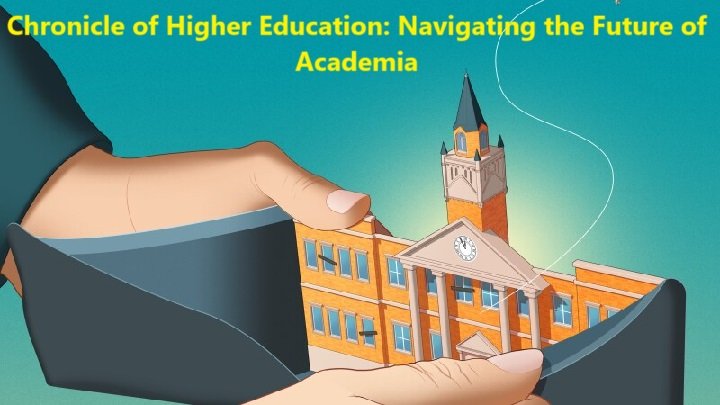
Are you curious about what comes after high school? Are you wondering what options are available to you for furthering your education? Look no further! In this blog post, we will delve into the world of post secondary education and explore its definition, importance, different types, pros and cons, as well as how to choose the right institution. Whether you’re a recent graduate or someone considering a career change, understanding post secondary education is crucial for making informed decisions about your future. So let’s dive in and discover all there is to know about this exciting phase of learning and growth!
Definition of Post Secondary Education
Post secondary education refers to any form of learning or training that takes place after completing high school. It is a stage where individuals can further their knowledge and skills in specific areas of interest, preparing them for their chosen careers or professions. Unlike primary and secondary education, which focus on providing a general foundation of knowledge, post secondary education offers more specialized and in-depth instruction.
This phase encompasses a wide range of institutions and programs, including universities, colleges, vocational schools, trade schools, and professional certification programs. These institutions offer various degrees such as bachelor’s degrees, associate degrees, diplomas, certificates and apprenticeships.
The Importance of Post Secondary Education
Post secondary education, also known as higher education, plays a crucial role in shaping an individual’s future. It is the educational level that follows high school and provides specialized knowledge and skills for specific careers or fields of study. The importance of post secondary education cannot be overstated, as it offers numerous benefits to students.
One key aspect of post secondary education is the opportunity to gain in-depth knowledge and expertise in a chosen field. Whether pursuing a degree in medicine, engineering, business, or any other discipline, students can delve deeper into their area of interest and acquire advanced skills that will set them apart in the job market.
Different Types of Post Secondary Education
Traditional Colleges and Universities: These institutions offer a wide range of degree programs in fields such as arts, sciences, business, and engineering. They typically require students to attend classes on campus and complete assignments throughout the semester.

Community Colleges: Community colleges provide two-year associate degree programs as well as vocational training courses. These institutions often have more affordable tuition rates and smaller class sizes compared to traditional universities.
Technical Institutes: Technical institutes specialize in providing hands-on training for specific trades or professions such as automotive repair, culinary arts, or graphic design. Students can gain practical skills that directly apply to their chosen field.
Online Education: With advancements in technology, online education has become increasingly popular. This allows students to study remotely from anywhere at their own pace. Online degrees are offered by many accredited colleges and universities.
Career Schools: Career schools focus on providing specialized training for specific careers like nursing, cosmetology, or massage therapy. These programs tend to be shorter in duration compared to traditional college degrees.
Pros and Cons of Attending Post Secondary Education
Attending post secondary education has its fair share of advantages and disadvantages. Let’s take a closer look at the pros and cons to help you make an informed decision.
Pros:
1. Career Opportunities: One of the biggest benefits of pursuing post secondary education is the increased job prospects it offers. A higher level of education can open doors to well-paying careers in various fields, giving you a competitive edge in today’s job market.
2. Specialized Knowledge: Post secondary education provides an opportunity to delve deeper into your chosen field, gaining specialized knowledge that can enhance your expertise and credibility in the industry.
3. Personal Growth: College or university life offers ample opportunities for personal growth, including developing critical thinking skills, enhancing communication abilities, and fostering independence.
Cons:
1. Financial Burden: The cost of post secondary education can be substantial, with tuition fees often being a major financial burden for students and their families. Additionally, expenses such as textbooks, accommodation, and living costs can further add to the financial strain.
2. Time Commitment: Pursuing higher education requires significant time commitment as full-time programs often span several years. This may limit your flexibility in terms of employment or other personal commitments during this period.
3. Career Uncertainty: Despite earning a degree or diploma from a reputable institution, there is no guarantee that you will secure immediate employment upon graduation. The job market can be highly competitive, requiring additional efforts such as internships or networking connections to stand out from the crowd.
How to Choose the Right Post Secondary Institution
Choosing the right post-secondary institution is a crucial decision that can have a significant impact on your future. With so many options available, it’s important to take the time and carefully consider what factors are most important to you.
Think about your desired field of study. Different institutions may specialize in certain areas or have stronger programs in specific subjects. Researching and comparing the curriculum and faculty expertise will help you determine if an institution aligns with your academic goals.
Next, consider location. Do you prefer a bustling city campus or a quieter rural setting? Think about what kind of environment will best support your learning style and overall well-being.
Financial considerations should also be taken into account. Look into tuition costs, scholarships, and financial aid opportunities at each institution to ensure it fits within your budget.
Alternatives to Traditional Post Secondary Education
In today’s rapidly changing world, traditional post-secondary education is not the only path to success. There are many alternatives available for individuals who want to pursue a different route or have unique career goals. These alternative options provide opportunities for lifelong learning, skill development, and personal growth.
One alternative to traditional post-secondary education is vocational training programs. These programs focus on specific trades or professions and provide hands-on experience and practical skills that can lead directly to employment. Vocational training can be a great option for those who prefer a more direct pathway into their chosen field.
Apprenticeships are another viable option for those looking for hands-on learning experiences while earning money at the same time. Apprenticeship programs typically combine classroom instruction with paid on-the-job training under the guidance of experienced professionals in fields such as construction, healthcare, or manufacturing.
Conclusion
In today’s competitive job market, post secondary education has become increasingly important for individuals looking to secure a successful career. It provides students with the necessary knowledge and skills to excel in their chosen fields. Whether it is obtaining a degree from a university or college, acquiring vocational training, or pursuing alternative options such as online courses or apprenticeships, there are numerous paths one can take.
Choosing the right post secondary institution is crucial in ensuring you receive quality education tailored to your interests and goals. Factors such as program offerings,reputation,cost,time commitment,and location should all be taken into consideration when making this decision.






